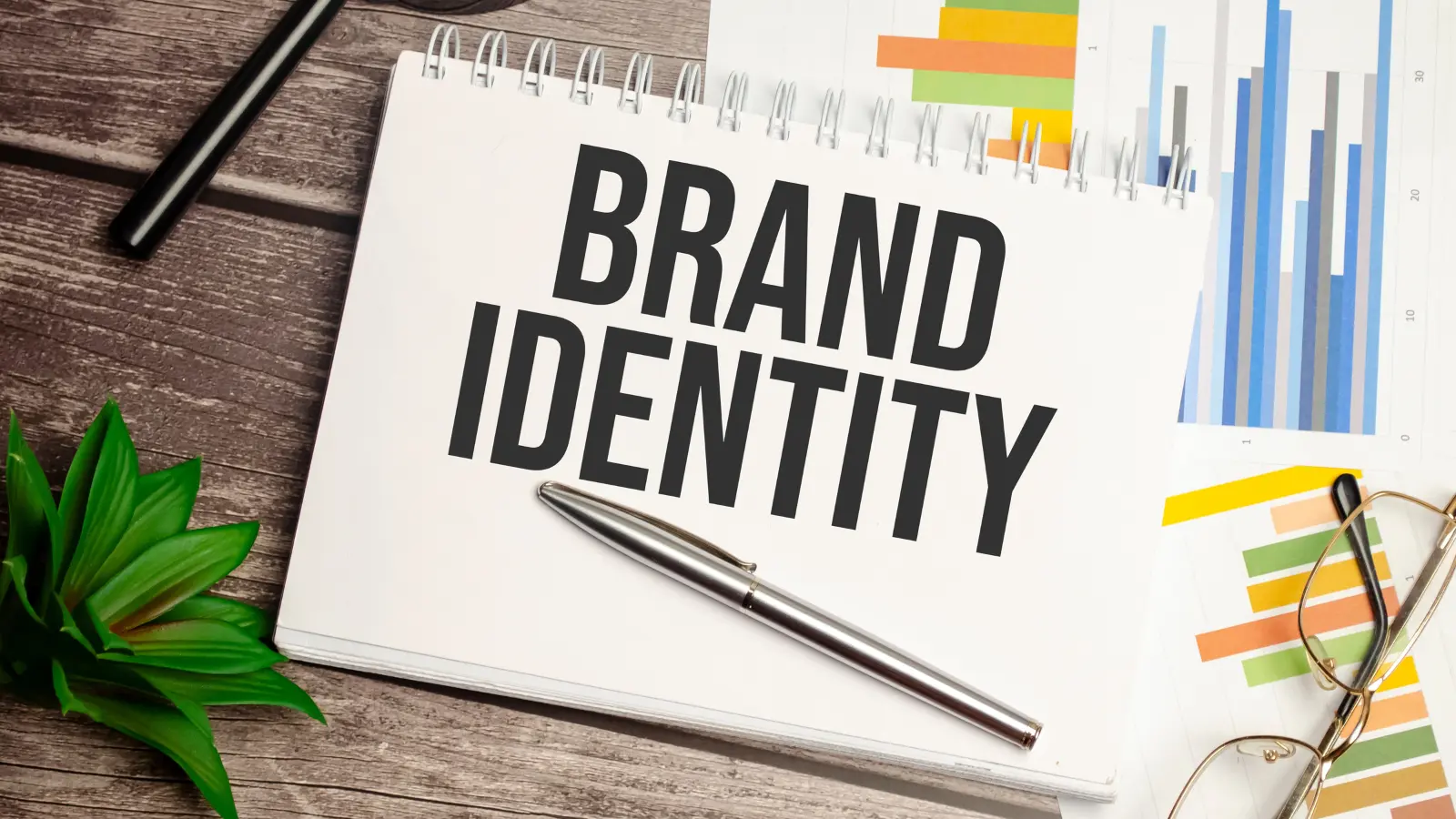Brand identity is more than just a logo or tagline; it’s the complete visual and emotional experience that a brand offers to its audience. It encompasses everything from your logo, color palette, and typography to the tone of voice and messaging you use in communications. A well-defined brand identity serves as the blueprint for how your business is perceived in the marketplace.
A strong brand identity has a direct impact on business success. It helps create a consistent image across all platforms, making it easier for customers to recognize and remember your brand. This recognition builds trust, which is crucial for attracting and retaining loyal customers.
The Importance of Brand Identity
- Differentiation: In a crowded market, a unique brand identity sets your business apart from the competition. It allows you to highlight what makes your products or services special, giving potential customers a reason to choose you over others.
- Building Trust and Credibility: Consistency in your brand identity establishes credibility. When customers see a brand that is cohesive in its visuals and messaging, they are more likely to trust it, leading to long-term customer relationships.
- Emotional Connection: A strong brand identity goes beyond aesthetics; it creates an emotional connection with your audience. This connection influences how people feel about your brand, encouraging them to engage with your products or services.
- Increased Brand Recognition: The more consistent your brand identity is, the easier it is for people to recognize and recall your business. Brand identity helps your audience associate specific visuals and messages with your brand, making it stand out in their minds.
- Foundation for Marketing Efforts: Your brand identity is the foundation of all your marketing strategies. Whether it’s digital marketing, social media campaigns, or traditional advertising, a clear brand identity ensures that your messaging remains cohesive and aligned with your brand values.
Crafting a solid brand identity isn’t just a marketing exercise; it’s a strategic move that shapes how your audience perceives your brand and influences their buying decisions.
4 Key Components of Brand Identity
- Logo: The logo is often the most recognizable element of a brand’s identity. It acts as the face of your brand, creating a visual symbol that people can instantly associate with your business. A well-designed logo should be simple, memorable, and reflective of your brand’s core values.
- Color Palette: Colors are powerful tools that evoke emotions and set the mood for how your brand is perceived. A carefully chosen color palette helps create a consistent look across all branding materials, from your website and packaging to marketing campaigns. It also plays a key role in making your brand more memorable.
- Typography: The fonts you use in your branding play an essential role in conveying the personality of your brand. Whether you choose a modern, sleek typeface or a classic, elegant font, typography helps reinforce the message and tone you want your audience to experience.
- Tone of Voice: The tone of voice refers to the style and attitude in which your brand communicates with its audience. It shapes how your message is delivered and perceived, whether it’s professional, friendly, witty, or authoritative. Consistency in your brand’s tone of voice across all platforms helps build a deeper connection with your audience.
Each of these components works together to create a cohesive brand identity that represents your business’s unique values and vision. When aligned properly, they make your brand instantly recognizable and leave a lasting impression on your audience.
The Significance of Brand Identity in Today’s Market
Brand identity plays an essential role in the current highly competitive business environment. It defines how your brand is perceived by customers and helps differentiate you from the competition. A strong brand identity goes beyond aesthetics; it forms the backbone of your marketing efforts and directly influences customer loyalty.
Role of Brand Identity in Differentiating from Competitors
- Unique Positioning: Brand identity allows businesses to stand out in a crowded market by highlighting what makes them unique.
- Customer Connection: By communicating your brand’s values and personality, you attract customers who resonate with your message, creating a stronger connection than just competing on price or features.
- Memorable Impression: A distinctive brand identity leaves a lasting impression on customers, making it easier for them to recognize and choose your brand over others.
Impact on Customer Perception and Loyalty
- Building Trust: Consistency in your brand’s messaging, visuals, and tone across all touchpoints builds trust with customers, making them more likely to engage with and remain loyal to your brand.
- Emotional Bond: A well-developed brand identity helps foster an emotional connection with customers. This connection is often a key driver of customer loyalty, encouraging repeat purchases and word-of-mouth referrals.
- Positive Perception: A cohesive and professional brand identity shapes how customers perceive your brand, contributing to a more favorable view of your products or services.
How Brand Identity Affects Marketing and Communication Strategies
Consistency Across Channels
A strong brand identity ensures that marketing and communication efforts remain consistent across every platform—whether through social media, email campaigns, or traditional advertising. For B2B marketers, maintaining cohesive branding across all channels reinforces the brand’s credibility and provides a unified experience that resonates with clients and customers alike. Consistent brand identity builds trust, making your brand more recognizable and reliable in the eyes of your target audience.
Stronger, More Targeted Messaging
With a well-defined brand identity, businesses can create more powerful and resonant marketing messages. A clear identity allows B2B marketers to tailor messages that align with the specific values and needs of their audience. This helps establish an authentic connection and gives your brand a unique voice in the industry. Effective messaging rooted in a strong identity not only stands out but also increases engagement and brand affinity.
Enhanced Brand Recognition and Recall
A recognizable brand identity enhances recall, making it easier for potential clients to remember and choose your brand when they’re ready to make a decision. In today’s competitive environment, where choices are abundant, brand recognition is a key advantage. A strong, memorable identity helps your brand stay top of mind, which is vital for building customer loyalty and trust over time.
In a crowded market, a strong brand identity is essential for differentiation, enabling B2B marketers to elevate the impact of their campaigns, create stronger client connections, and foster lasting brand loyalty.
4 Steps to Create a Compelling Brand Identity
Creating a compelling brand identity requires careful planning and execution. By following these steps, you can ensure that your brand resonates with your audience and stands out in the marketplace.
1. Defining Your Brand’s Core Values
Defining your brand’s core values is a fundamental step in shaping its identity. These values represent what your business stands for and guide all branding decisions.
- Importance of Aligning Identity with Values: Aligning your brand identity with your core values helps build authenticity and trust. When customers see that your actions reflect your stated values, they are more likely to connect emotionally with your brand. This connection fosters loyalty and encourages customers to advocate for your brand.

2. Identifying Your Target Audience
Understanding your target audience is crucial for developing a brand identity that resonates with them.
- Understanding Audience Needs and Preferences: Conducting market research helps you identify the demographics, interests, and pain points of your target audience. By knowing what they value and how they perceive brands, you can tailor your identity to meet their expectations. This understanding allows you to create messaging and visuals that truly resonate, increasing engagement and building lasting relationships.
3. Developing Visual Elements
Visual elements are the most recognizable parts of your brand identity.
- Tips for Designing Logos: Your logo should be simple, memorable, and reflective of your brand’s personality. It should be versatile enough to work across various media.
- Choosing Color Schemes: Colors evoke emotions and associations, so choose a palette that aligns with your brand’s values and target audience. Consistency in color use reinforces brand recognition.
- Selecting Fonts: Typography should complement your brand’s personality and maintain readability. A consistent font choice across all platforms enhances the overall coherence of your brand identity.
4. Crafting Your Brand Voice
Your brand voice is essential for communicating with your audience effectively.
- Strategies for Developing a Consistent Tone in Messaging: Define the personality traits you want your brand to convey (e.g., friendly, professional, authoritative). Create a style guide outlining your tone, vocabulary, and writing style to ensure consistency across all channels. Regularly review and adapt your messaging to stay relevant while maintaining your brand’s unique voice.
Evolving Your Brand Identity
In a rapidly changing market, it’s essential for brands to evolve and stay relevant. Refreshing your brand identity can help you maintain a competitive edge and connect with your audience effectively. Recognizing when and how to refresh your Brand Identity is crucial.
- Market Changes: Pay attention to shifts in consumer behavior, industry trends, or competitor activities that may signal the need for a brand refresh. If your current identity no longer resonates with your audience, it might be time for an update.
- Company Growth or Change: Significant changes within your company such as new leadership, product lines, or target markets can necessitate a brand refresh. Aligning your identity with your evolving business strategy is crucial for maintaining relevance.
- Feedback and Performance: Monitor customer feedback and brand performance metrics. If customers express confusion or dissatisfaction with your brand identity, it may indicate the need for a refresh.
Strategies for Maintaining Consistency During a Rebrand
- Create a Clear Vision: Before initiating a rebrand, define a clear vision that outlines your goals and the reasons behind the refresh. This vision will guide all branding decisions and help maintain consistency.
- Develop a Brand Style Guide: A comprehensive brand style guide that includes guidelines for visuals, messaging, and tone can ensure consistency across all platforms during the rebranding process.
- Communicate Internally: Ensure that all team members understand the rebranding strategy and its importance. Internal communication helps align everyone with the new identity, fostering a unified approach in customer interactions.
- Gradual Implementation: Instead of an abrupt change, consider a phased approach to rebranding. This allows your audience to adjust to the new identity gradually while minimizing confusion.
Successful B2B Rebrands
- Slack: Originally a small project management tool, Slack rebranded itself as a hub for team communication and collaboration, focusing on ease-of-use and integration with other productivity apps. By positioning itself as an essential workplace tool, Slack quickly gained traction among companies worldwide, becoming synonymous with seamless communication in the digital workplace. See how Slack positioned its brand in the B2B market.
- IBM: IBM transitioned from a hardware-focused brand to a global leader in AI, cloud computing, and consulting. Through extensive rebranding, it moved away from manufacturing to focus on technology and innovation, promoting itself as an AI-driven solutions provider for businesses. IBM’s rebranding has enabled it to remain highly relevant in a fast-evolving tech landscape.
These B2B rebranding efforts demonstrate the power of evolving brand identity to better connect with target audiences, adapting to industry trends, and positioning for growth in competitive markets.
How Can HT India’s Most Stylish Event Help in Creating a Strong Brand Identity?
HT India’s Most Stylish celebrates fashion, lifestyle, and excellence in style across various industries. It brings together celebrities, influencers, and trendsetters, making it a key platform for showcasing innovation and creativity.
For brands, this event serves as a unique opportunity to align themselves with style, elegance, and sophistication. Businesses can leverage HT India’s Most Stylish event to enhance their brand identity in several ways:
- Brand Exposure: By participating in the event, brands can gain significant visibility among a curated audience that appreciates style and innovation. This exposure can help position the brand as a leader in its sector.
- Customer Engagement: The event provides a platform for direct interaction with potential customers. Brands can set up booths, conduct live demonstrations, or offer exclusive experiences that foster deeper connections with attendees.
- Influencer Collaboration: The presence of fashion influencers and celebrities offers brands the chance to collaborate on marketing initiatives. By associating with well-known personalities, brands can amplify their reach and credibility.
Frequently Asked Questions
What is brand identity, and why is it important?
Brand identity encompasses all visual and emotional elements that define how a brand presents itself to its audience. This includes logos, color palettes, typography, and messaging tone. A strong brand identity is crucial as it differentiates a business from competitors, builds trust with customers, and fosters emotional connections. It helps create a cohesive image across various platforms, enhancing brand recognition and loyalty, ultimately influencing customer buying decisions.
How can I define my brand's core values?
Defining your core values involves identifying what your brand stands for. Start by reflecting on your brand's mission, vision, and purpose. Consider the principles that guide your business decisions and how you want to be perceived by your audience. Engage with your team or conduct surveys to gather insights. Once identified, communicate these values consistently through your branding, ensuring they resonate with your target audience and build authenticity.
What role does visual identity play in brand recognition?
Visual identity is a key component of brand recognition, as it includes elements like logos, colors, and typography that visually represent your brand. A cohesive and memorable visual identity allows customers to easily associate specific imagery with your brand. This consistency across marketing materials enhances recall and fosters familiarity, making your brand more recognizable in a crowded marketplace. Well-designed visual elements can also evoke emotions, reinforcing your brand's messaging.
How can brands effectively evolve their identity over time?
Brands can evolve their identity by regularly assessing market trends, consumer feedback, and internal changes. Recognize when your current identity no longer aligns with your goals or audience preferences. Implement gradual updates rather than abrupt changes to ease audience transition. Maintain a clear vision and develop a comprehensive style guide to ensure consistency throughout the evolution process. This adaptability will help your brand stay relevant and connected to your audience.
What are the benefits of sponsoring events like "HT India's Most Stylish"?
Sponsoring events such as "HT India's Most Stylish" offers several benefits for brands. It provides significant exposure to a stylish, engaged audience, enhancing brand visibility and credibility. Brands can directly interact with potential customers and collaborate with influencers, amplifying their reach. This association with a prestigious event elevates brand status, fostering trust and recognition. Additionally, sponsorship creates networking opportunities, allowing brands to form valuable industry connections that can lead to future collaborations.
Ready to take your brand to the next level? Connect with us today to explore how HT Media can amplify your presence across our diverse portfolio of 25+ brands and properties. Let's turn your brand vision into reality!



















Comment